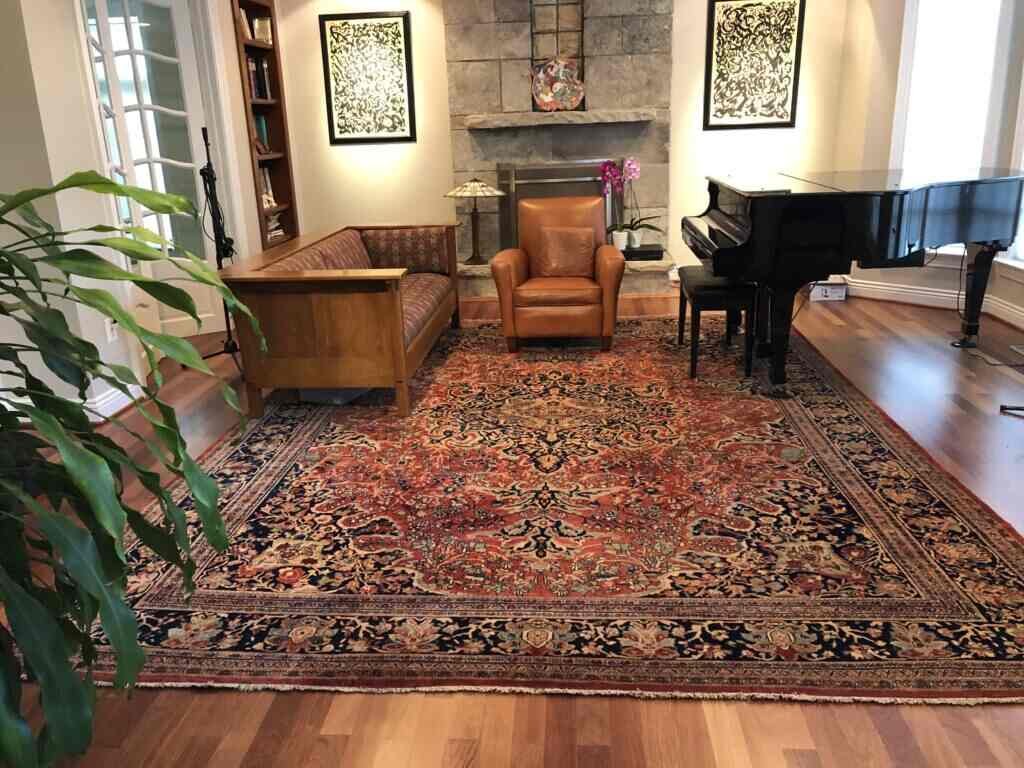Oriental rugs have been prized for their exquisite craftsmanship, intricate patterns, and the rich history they represent. These handwoven treasures, originating from regions such as Persia, Turkey, and China, are much more than functional home items—they are timeless works of art, each reflecting the culture and tradition of its origin. Whether you’re a passionate collector or someone who appreciates fine decor, owning an Oriental rug is an enriching experience that elevates any space. However, with great beauty comes the responsibility of maintaining these delicate pieces. Proper care and professional upkeep are essential to preserving their charm and extending their lifespan.
In this guide, we’ll delve into the fascinating history of Oriental rugs, offer practical tips on how to care for them, and explain why Professional cleaning of Oriental rugs is crucial for maintaining their beauty.
The Rich Heritage of Oriental Rugs
The origins of Oriental rugs trace back to ancient civilizations, with some of the earliest examples found in Persia (modern-day Iran), China, and India. Historically, these rugs were not only used as floor coverings but also as symbols of wealth and status. The distinct weaving techniques, materials, and designs used in various regions reflect the local customs and environmental influences.
Some of the most famous styles of oriental rugs include:
- Persian Rugs: Known for their fine silk and wool craftsmanship, Persian rugs often feature complex medallion designs, floral motifs, and vibrant color palettes.
- Turkish Rugs: These rugs are distinguished by their bold colors and tribal designs. Common symbols found in Turkish rugs include motifs for protection, fertility, and prosperity.
- Chinese Rugs: Featuring mystical creatures like dragons and phoenixes, Chinese rugs carry symbolic meanings related to power, wisdom, and luck.
Owning an Oriental rug is akin to possessing a piece of history, and with such historical significance comes the responsibility of proper care.
Why Maintenance Is Key
Oriental rugs are typically made from natural fibers like wool, cotton, and silk, which require regular care to maintain their luster and structural integrity. Dust, dirt, and allergens can accumulate in the fibers, dulling the rug’s appearance and causing damage over time. Routine vacuuming, without a beater bar, helps to remove surface debris, but this alone is not enough to preserve the rug’s vibrancy.
Periodic professional cleaning is essential to remove deeply embedded dirt and restore the rug’s natural colors. Experts have the knowledge and tools required to clean delicate fibers without causing harm, ensuring that the rug remains in pristine condition.
Common Challenges Faced by Oriental Rugs
Owning an Oriental rug means being mindful of potential issues that can arise over time. Here are some of the most common problems and how to address them:
- Stains: Spills are bound to happen, especially in high-traffic areas or homes with pets and children. For immediate action, blot the spill gently using a clean, dry cloth. Avoid rubbing the area, as this can push the stain deeper into the fibers.
- Fading: Prolonged exposure to sunlight can cause colors to fade, diminishing the rug’s visual appeal. To prevent this, place the rug in a shaded area or use UV-protective window treatments. Rotating the rug every few months can also help distribute sunlight exposure and wear more evenly.
- Moth Damage: Moths are particularly drawn to wool and silk fibers. If left unchecked, they can leave behind unsightly holes. Regular cleaning and proper storage are vital in preventing moth infestations. At the first sign of damage, professional intervention is recommended.
- Fraying Edges: The edges of Oriental rugs are vulnerable to wear, especially in high-traffic areas. Frayed edges can lead to unraveling, but professional repair services can reinforce these vulnerable areas and prevent further damage.
The Benefits of Professional Cleaning
Although regular maintenance is important, Oriental rugs benefit greatly from periodic professional cleaning. This process typically involves several steps, including:
- Inspection: A thorough examination of the rug to identify specific problem areas such as stains, frayed edges, or moth damage.
- Dusting: Specialized equipment is used to remove dust and dirt that have become embedded deep within the rug’s fibers.
- Washing: Using gentle, pH-neutral detergents, professionals clean the rug while preserving its colors and delicate fibers.
- Drying: After cleaning, the rug is carefully dried to prevent mold or mildew from developing.
By entrusting your Oriental rug to a professional cleaner, you ensure that it receives the detailed care it needs to last for generations.
Tips for Preserving Your Oriental Rug
In addition to professional cleaning, there are several steps you can take at home to keep your rug in top condition:
- Rotate Regularly: Turning the rug every few months helps distribute wear evenly, particularly in areas exposed to sunlight or heavy foot traffic.
- Use a Rug Pad: Placing a rug pad underneath helps cushion the fibers, preventing excessive wear and minimizing damage caused by furniture.
- Handle with Care: When moving your rug, roll it up rather than dragging it across the floor. This prevents stretching or tearing of the fibers.
- Quick Action on Spills: Address spills as soon as they happen to prevent staining. If you’re unsure how to clean a particular spill, seek professional advice.
Conclusion
Oriental rugs are not only a beautiful addition to any home but also a testament to the artistry and cultural heritage of their regions of origin. Their intricate designs and luxurious textures make them unique, but they also demand special attention and care. Through regular maintenance and professional cleaning, you can protect the beauty and value of your Oriental rug for years to come.
By investing the time and effort into proper care, you honor the craftsmanship behind each piece and ensure that it continues to be a centerpiece in your home for generations.

